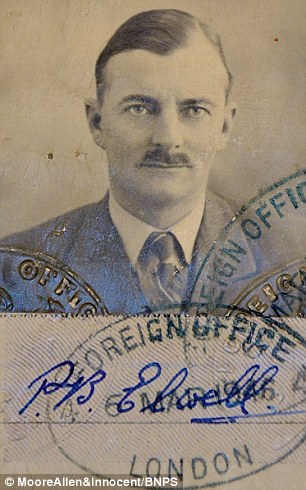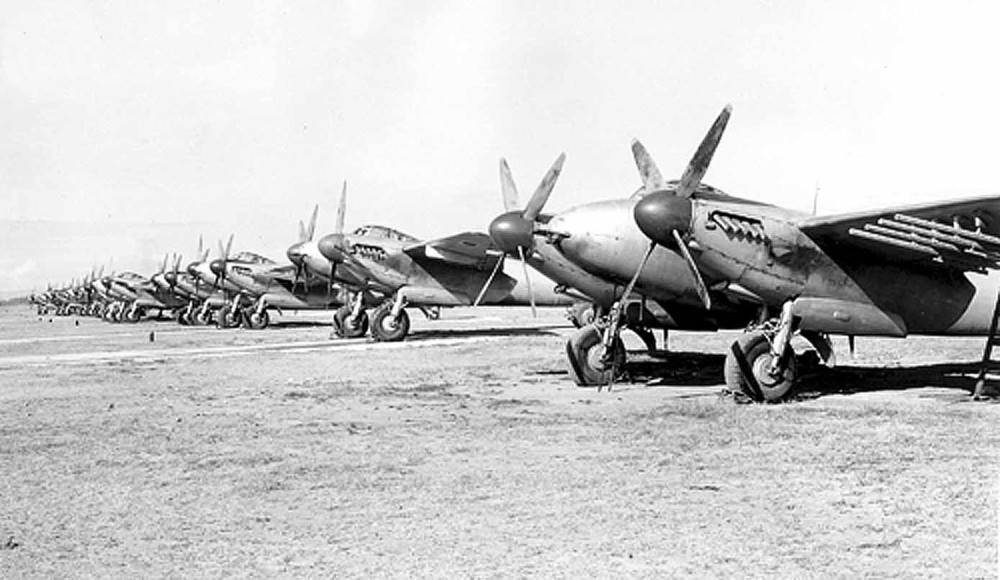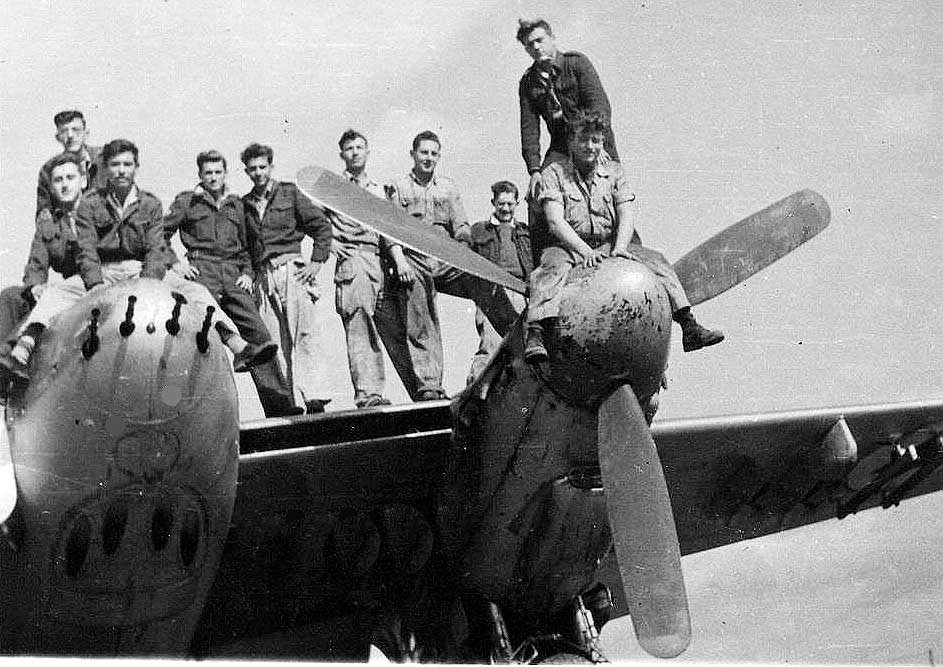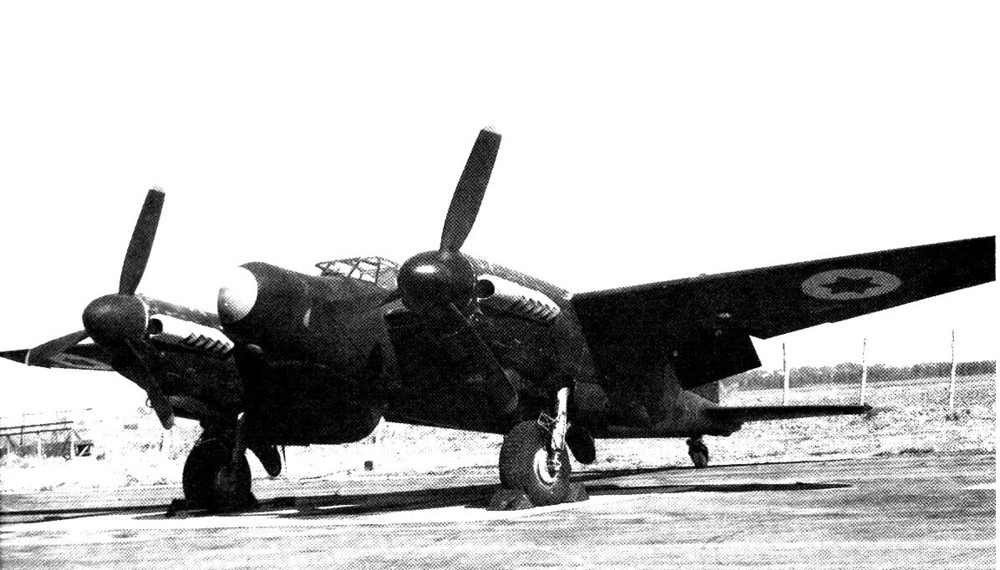

Bozon
Members-
Posts
844 -
Joined
-
Last visited
Content Type
Profiles
Forums
Events
Everything posted by Bozon
-
First, you may want to look for the more “recent” print (2nd ed.) The cover looks like this: https://www.amazon.com/Terror-Starboard-Seat-David-McIntosh/dp/0773730893/ref=mp_s_a_1_1?dchild=1&keywords=terror+in+the+starboard+seat&qid=1621488682&sr=8-1 Don't buy this from Amazon. Look for smaller shops that still have new copies of the above edition. You can get it at half the price. Yes, it’s a pretty rare book.
-

TEST: are German fighters too tough?
Bozon replied to PL_Harpoon's topic in Western Europe 1944-1945
I don’t understand what is this electrical ammo priming? AFAIK the synchronization prevents the guns from firing at certain prop positions, otherwise the gun is firing at its max rate. If it occasionally delays a discharge the gun can never fire at its maximum rate. -

TEST: are German fighters too tough?
Bozon replied to PL_Harpoon's topic in Western Europe 1944-1945
The allied planes suffer from convergence that is set too far out for air combat. For air combat the effective ranges are 200-300 yards, while the wing mounted guns seem to converge much father out, maybe 1000 yards. The latter is fine for ground strafing but makes 200-300 yards shot much less effective since your right-wing guns and left-wing guns hit wide apart, especially in the P47 due to the distance between its right and left guns. The above does not explain the lethality of the MG131s. They are in the nose, but still only 2 of them and they lose ROF to the synchronization with the prop. I wait for the Mosquito 4 hispanos + 4 303s all nose mounted and no prop in the way to slow them down... -

DCS: de Havilland DH.98 Mosquito FB Mk VI Discussion
Bozon replied to msalama's topic in DCS: Mosquito FB VI
Another Friday news and no mention of the Mosquito. I am not expecting much, but a word of the time scale to EA release, or something about what is being developed, or maybe what is left to be done - just to give is a feeling of progress and something to look forward to would have been nice. -

DCS: de Havilland DH.98 Mosquito FB Mk VI Discussion
Bozon replied to msalama's topic in DCS: Mosquito FB VI
Brits do a lot of things reversed to this day, like driving on the wrong side and stick shifting with the left. In my country we call a reversed screw an “English screw”. I remember an American journal article on the Hurricane - the caption under a photo of the traditional RAF stick with its roll axis half way up the shaft said: “It’s not broken - it’s British” This is what makes Brits, Brits. Otherwise they’d be just off-shore Europeans... -

DCS: de Havilland DH.98 Mosquito FB Mk VI Discussion
Bozon replied to msalama's topic in DCS: Mosquito FB VI
You give a whole new meaning to the phrase “wooden wonder”... -
Doesn’t Jester do that on the F-14?
-
Interesting. My first reaction was that this is because it was an NF mosquito and navigation was not a major thing for them (flying high and not very far), unlike the FB.VI squadrons. In the NF squadrons the “observers” were also operating the radar of course. By the way, at the top of the reports I attached, Ferguson is titled as “R/N” for Radio/Navigation. However, I sampled some FB.VI intruder combat reports from RCAF 418 squadron that I had on my drive thinking they may refer to their 2nd crewman as “navigator” - they too refer to their navigators as “observers”. In the book “Terror in the starboard seat”, Dave MacIntosh quotes Sid his pilot referring to him as his “navigator”, or when joking at his expense - his “alligator” (they were RCAF 418 as well). So I guess that the terminology was not very strict.
-
The night is not always dark Some years ago I ran into a story about a WWII veteran's medals being sold in an auction. The veteran was Wing Cmdr. Paul Bingham Elwell, a Mosquito pilot. The article told that the DFC medal was awarded to Elwell for fighting 5 FW-190s. A local paper at the time is cited reporting: 'He raced in and fought the planes until his ammunition was exhausted. He destroyed one FW for certain, and probably another, before returning home safely.' Recently I ran into this story again and decided to dig a little deeper. To my surprise I was able to find the combat report from that sortie, online. Interestingly, Elwell was flying a NF.XIII night fighter and the incident happened near 23:00 hour. My 1st thought was "how do you fight 5 FW-190s at night?". Then I realized that the date was 24 June 1944, one of the longest days of the year and over the French coast there is still some dusk light even late at night. The sunset at this time would be in a northerly direction, which fits well with the story, but is completely odd to a low latitude dweller like me. Anyway, this story demonstrates that with an advantageous initial position, mosquito fighters would aggressively attack enemy single-engine fighters. I typed here an abridged version of the report. The full report (together with 2 more, for all Elwell's kills in the war) is also attached. ------------------ABRIDGED--------------------- 24/25 June 1944 264 Squadron Mosquito XIII. Pilot S/LDR P.B.Elwell N/R F/o. F. Ferguson 10 miles N of Le Harve Clear twilight, slight haze below "I arrived at Fighter Pool One at 2245 hours on 24th June. My observer and I saw several flares being dropped on a bearing 220 from us and about 25 miles away. We were given permission to investigate and and flew off in that direction as fast as we could. My observer obtained contact at 3 miles distant. I then saw bombs exploding in a line on the water. A few seconds later an aeroplane appeared against the bright sunset, climbing steeply in a northerly direction. This was followed by four more in a line astern. Our range at this time being roughly 1.5 miles, we turned and followed closing in to about 1,000 yards. E/A separated into two formations, two a/c turning hard port and three a/c to starboard at 6,000 feet. In view of the daylight, my observer said that he would look backwards for the 2 a/c which were turning to port while I followed the other 3 a/c visually. While they were at 1,000 yards and silhouetted against the sunset I had identified 5 FW 190. We again closed in slowly. I was now firing repeated short bursts at the a/c on the port side of the leader. No strikes were seen until we came in to 300 yards when a bright yellow glow occurred in the center of the a/c. The E/A turned to port and was lost to sight under the nose of the mosquito. It disappeared still burning. I immediately swung the sights to the starboard E/A and continued firing, closing range to about 100 yards. We were now being considerably buffeted by the slipstream of the E/A but strikes were seen. Both E/A turning to port, I allowed 20 deg deflection and on next burst E/A exploded and flick rolled to port, a mass of flame and spun violently down. I immediately swung the sights on to the last remaining a/c but after one short burst ammunition ran out. No strikes were seen. I turned to starboard and saw a mass of flame on the water below. Position about 20 miles N. of Le Harve. My observer shouted "E/A on out tail". We did a violent diving turn to starboard and finally pulled out at about 1,000 feet, flying North East, time now being 2320 hrs. I claim 1 FW 190 destroyed and 1 FW 190 probably destroyed." ------------------ABRIDGED--------------------- Elwell ended the war with 3 confirmed kills (FW 190, ME 410, Do 217). He tragically died at the age of 52 when he crashed his British passenger airliner de Havilland DH 89 Dragon Rapide after suffering a heart attack while landing the aircraft at Entebbe Airport, Uganda in October 1962. The combat reports: D7491633.pdf Online sources: https://www.warhistoryonline.com/war-articles/fearless-feat-wwii-mosquito-pilot-5-german-focke-wulf-fw-190-aircraft.html https://www.dailymail.co.uk/news/article-2449430/He-raced-fought-ammunition-exhausted-Bravery-World-War-Two-Mosquito-pilot-took-FIVE-German-fighter-planes-survived.html
-
Sure it's a great turn fighter: 1. You make a gun pass at the enemy, follow through and extend. 2 Land at a field in front of you. 3 The ground crew turns the plane around. 4. You take off in the opposite direction to make another pass at the enemy.
-
You need to press and hold the pickle until the computer decides to release the bomb - this is CCRP.
-

Can we have a Sea Mosquito version for carrier landing?
Bozon replied to qcheck's topic in DCS: Mosquito FB VI
I’d love to have the TR mk.33. About half of them ended up in the Israeli airforce as fighter-bombers. However, this is not the best choice of additional variants in DCS. It will have no use in WWII scenarios or any other for that matter. FB.XVIII tse-tse will be much more useful. If we go for night fighters, F.XIII or the later F.30, bomber versions B.XVI, or the older but classic B.IV. I will take any Mosquito that DCS decides to model - the more the merrier! -
I too think that it is better to focus the planes roster around Normandy. Regarding the P-38, I think the relevant model for Normandy is probably the H. AFAIK, P-38J was introduced a short time later around September 44(?), so may qualify?. I am not a great P-38 expert though. Other allied aircraft: A20, Spit XIV, Typhoon. Other Axis aircraft: 109G6 (some late sub variant), 190A5-7(?), JU-88 attack variant.
-

Which module of the second world war? Thank you
Bozon replied to Ravent's topic in DCS: P-47 Thunderbolt
120 is takeoff speed. FB.VI Pilot notes say stall speed power off is 105 mph, power on “under typical approach conditions” is 90-95 mph. The low-speed stall is said to be very docile with little tendency of dropping a wing, with ample warning 10 mph before the stall, which means a pilot can safely fly very close to the edge. Googling, I think you may have got the 120 mph from Wikipedia. Wikipedia gives 127 mph stall speed for the 190D9 by the way - this is still higher than the mossie. -

Which module of the second world war? Thank you
Bozon replied to Ravent's topic in DCS: P-47 Thunderbolt
Well, if a player thinks a 190D9 can slow down and turn with a mosquito, he too is going to be very disappointed. And dead -
So if you land a plane on the wrong airfield, it is still added to the resources there ? In that case why not allow spawning from more fields, but have the F5 (or others) resource available initially only on 1 field. When you land F5 on another field you will now be able to respawn it from there. Is that possible? At least this way the resource is not entirely lost.
-

When will it be released? I have been waiting for a long time
Bozon replied to huchanronaa's topic in DCS: Mosquito FB VI
It means quality control is working. Kudos to DCS for having the will to do this at the cost of delays. I am willing to wait a little longer for a quality product. -

When will it be released? I have been waiting for a long time
Bozon replied to huchanronaa's topic in DCS: Mosquito FB VI
DCS is objectively not cheap, that much is very true. However, given the amount of man hours that go into developing every module and the small market it is aimed at they can’t be any cheaper. If you sum up all the modules you will get to a ridiculous sum. But, this is not how DCS should be evaluated. You are not supposed to buy all the modules, instead it is a product that you customize to your needs and buy only the required components. That is still pretty darn expensive, but this is at least within reason and fits the development investment required. -

Suitable airfields on the Normandy and Channel maps
Bozon replied to Mr_sukebe's topic in DCS: Mosquito FB VI
While I don’t know the exact minimal takeoff distance, it should be shorter than a P-47s as @grafspee said. The bomb load is only 2000 lbs and it has a lot of excess power from the 2 engines. More than runway length, mosquitoes needed an open area after the runway so they could accelerate to minimal one-engine speed without climbing much. Mosquitoes were designed to operate from rough fields and had very sturdy undercarriage with quite massive main wheels. Numerous squadrons of TAF (so taking off with bombs) operated from forward continental fields after the Normandy landings. I don’t think they had any issues with the length of the runways. -
@Alicatt, Thanks, I didn’t know about this book.
-
Thanks, but I am just a drooling fan, not a great scholar expert. From what I do know (mostly pilot notes) FB.VIs had both VHF and HF radios. The VHF should be the one for communicating with the tower etc. lile the other warbirds, and HF is for long ranges. The equipment can be of different configurations that I know little about. The stuff installed behind the pilot (radio receivers, transmitters, DF and/or Gee) changed configurations from squadron to the next and over time. It will be interesting if the HF will be functional and how will we be able to use it.
-
Good point.
-
This story is not exactly a raid - it is about the arrival of the 1st mosquito to the Israeli Airforce (IAF). Not many realize this, but after Israel's independence, for a brief period of a few years, the IAF was almost an all Mosquito airforce. Also, as far as I know, the last combat action of mosquitoes anywhere was with the Israeli airforce. So, without further ado this is the story of: The first and last Mosquito in the Israeli Air Force The plane was NS812, a PR.XVI Mosquito meant to be delivered to the US 8th air force on May 1945. However, due to the war's end it was delivered to a storage unit instead, declared "surplus", and put on auction. The buyer was group captain Geoffrey Leonard Cheshire, previously CO of 617 sqd. "The Dam Busters". The plane earned the civilian registration G-AIRT in October 1946, but never flew under this registration. During Israel's independence war, a man named John Harvey, a British citizen and ex-RAF bomber pilot was asked by Israeli purchase agents to locate and purchase Mosquitoes for the fledgling Israeli air force (then still called "air service"). At that time, war planes were offered for sale only to British companies. Harvey contacted his friend and war-time commander air vice-marshal Bennet who was an owner of a company, to purchase two mosquitoes for him. He purchased two mosquitoes for 4500 pounds a piece - one of them was G-AIRT. On 7 July 1948 John Harvey took off from Abingdon with G-AIRT that was loaded with Mosquito spare parts, with the intent to fly to Corsica and then to Israel. However due to engine problems that increased fuel consumption he was forced to land in Nice, France. The French authorities arrested Harvey and placed him in house arrest in a hotel. The French were furious for not receiving any message about the plane's arrival, that was still painted in RAF colors and letters. The Israeli purchase agent was able to negotiate Harvey's release and the plane took off again after minor repairs. When the plane landed in Corsica, the British console was informed of the landing and headed to the airport with local police. However, the police notified the field manager who passed the word on to the an Israeli liaison officer. By the time the Console and police arrived, new letters were painted on the plane, papers were forged, and Harvey took off and circled the island till the police left after finding no trace of the plane. Harvey landed again and on July 13 1948 took off for a direct flight to Israel. As Harvey was over the Mediterranean nearing the shores of Israel, the fuel tanks were almost empty due to an increased fuel consumption problem again. Harvey could not proceed to Ekron airfield as planned and decided to land in the nearest strip - Haifa, coming in a direct approach. As he was coming with flaps out and gears down, the AAA gunners who were not informed started shooting... Luckily, the gunners plainly sucked, and Harvey managed to land safely on his last drops of fuel - the plane ran out of fuel on the runway and was unable to taxi. The controller on the field who also had no warning about this landing, pulled out his pistol and ran to the plane. He was smart enough to ask questions before shooting... The next day, the plane was repainted, received the ID "D-160" (actually the Hebrew letter equivalent to "D") and joined 103 squadron (later its ID changed to "2101"). The plane was fitted with a camera and bomb racks. On 13.9.1948 the plane took off on its first mission, photographed Damascus and then Beirut on the way back. The plane went on to perform many long range PR missions all over the middle east, from the Egypt-Sudan border to Iraq. After the war ended, the first Israeli mosquito was soon joined by many other mosquitoes of various models: FB.VI, NF.XXX, TR.33 (navalized mossies that were de-navalized and converted to fighter-bombers), and more PR.XVIs - about 80 Mossies in total. Most of them purchased from France by the way. Therefore, at its early days after the independence war, most of the IAF was composed of mosquitoes. Sounds like a dream airforce! However, many of the mosquitoes were weary and in a poor state, and the Israeli sun damaged them further. Serviceability was low and accidents frequent. Within a couple of years, most of the IAF mosquitoes went into storage as the IAF entered the jet age. By 1956 only the PR mosquitoes that were too valuable, kept flying. During the "Suez crisis" in 1956 (operation "Kadesh" for Israel) some mosquitoes were briefly taken out of the mothballs for one last dance - they gave a very good account of themselves in the ground attack role without any losses. This was AFAIK the last combat action of mosquitoes in the world. The PR mosquitoes kept flying into Egypt in spite of the threat now being Mig-15s. PR mossies photographed the Egyptian airfields for a bold plan to destroy the Egyptian air-force on the ground. However, during the Suez crisis France & Britain were responsible for suppressing the Egyptian air-force - the IAF plan of attack went to the drawer, but was eventually executed in 1967 "six days" war. The mosquitoes were retired immediately after the war, but the last of the IAF mosquitoes, our NS812/G-AIRT/Dalet-160/2101, kept flying after the operation into 1957 - until it was severely damaged in a landing accident and written off. Thus ended the service of the mosquitoes in the Israeli air force - with the same plane that started it. The last mosquito in the Israeli air force after the accident. The stripes were yellow between two blues - still the colors from the Suez crisis. A line of Mosquitoes from 109 Sqd. IAF. These are probably the de-navalized Mk TR.33 models, notice the 4 bladed propellers. Mechanics from 109 Sqd riding what appears to be somewhat worn-out mosquito. NF.30 in all black. These were meant to be used as night fighters, but the black colors made the Israeli sun deadly to the planes and deformed the wood. I guess shade was not invented yet in the early 1950's.
-
The DCS comment about the radios is most likely regarding the Gee system. This system was operated by the navigator and I don’t think that the pilot can even reach it from his seat. Normal radios they have modeled for every plane and mosquito radios are not special. I doubt they intended to release it to EA without the ability to communicate with the tower.
-

DCS: de Havilland DH.98 Mosquito FB Mk VI Discussion
Bozon replied to msalama's topic in DCS: Mosquito FB VI
Test pilot Keith Skilling explains the throttle operation on take off in this video starting 2:45 (I don’t know how to link YT at a specific time stamp). There were two approaches to handling the torque on take off - one is to use asymmetric power to the engines (lead with one throttle forward to the other). The other is to start rolling with lower power until the rudder starts to take effect and then go to full. He also says they only go to +13 boost and not to +18 probably in order not to stress the precious engines too much. https://youtu.be/lCUk2L7RTnE







